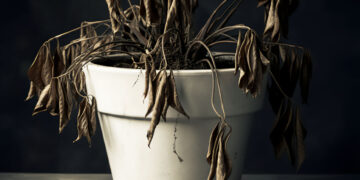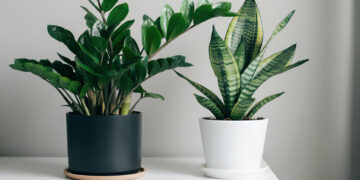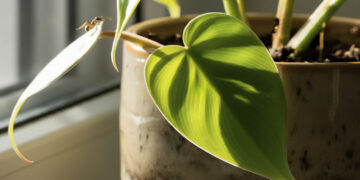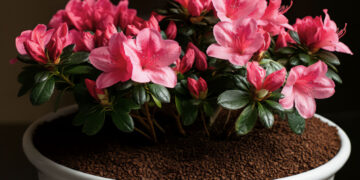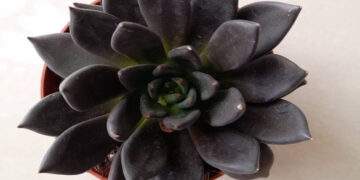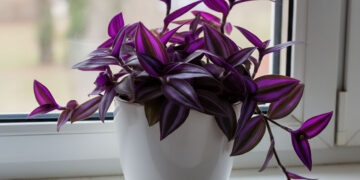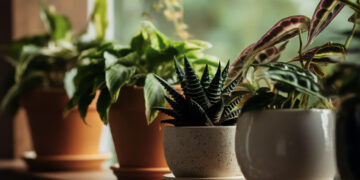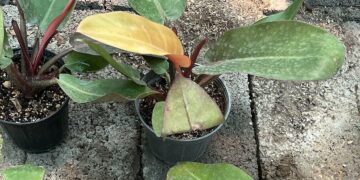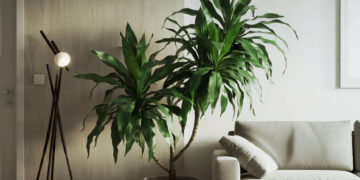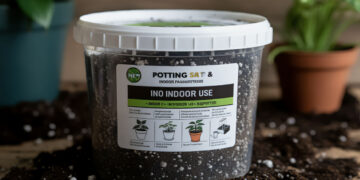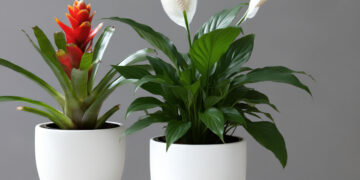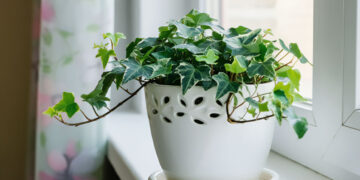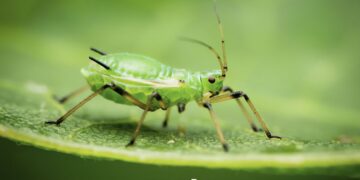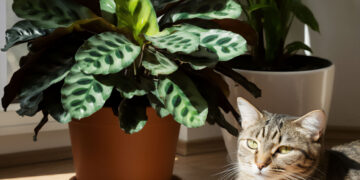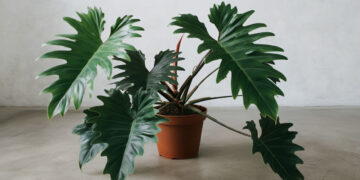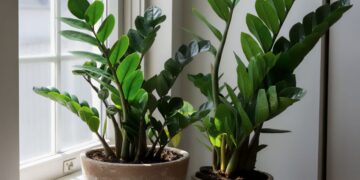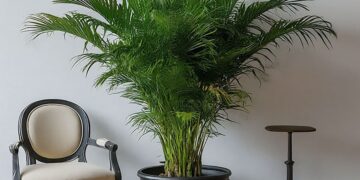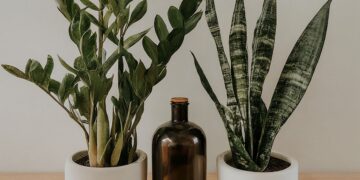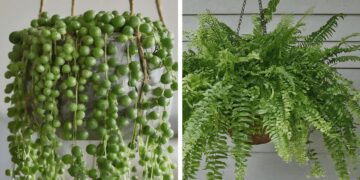Suppose you are looking for a houseplant with big leaves to add beauty to your indoor green space. In that case, I will introduce you to 10 houseplants and explain the points you should know before buying them.
Tips before buying large leaved houseplants
First of all, consider that most big leaf plants need proper, indirect light, and some big leaf plants grow in high humidity environments. If the place you’re in has very little light, it might be better to go for low-light houseplants.
you should know that this indoor plant needs a significant place to grow and spread its leaves. So if your house is small or you don’t have enough space to keep it, don’t go for big-leaf houseplants.
Additionally, you should be aware of how much your large-leaved houseplant grows in a time. Knowing the growth rate of the houseplant will prevent it from becoming a burden.
In the next step, check the houseplant care factors, for example, how much light the houseplant needs, how much temperature and humidity is required, how to water a houseplant, what kind of soil it prefers, how to prune a houseplant, What pests can attack it and is it poisonous to pets and humans?
I am interested in showing you ten big leaf houseplants that need ample space and making clear how to take care of them.
1. Monstera Deliciosa (Swiss Cheese Plant)
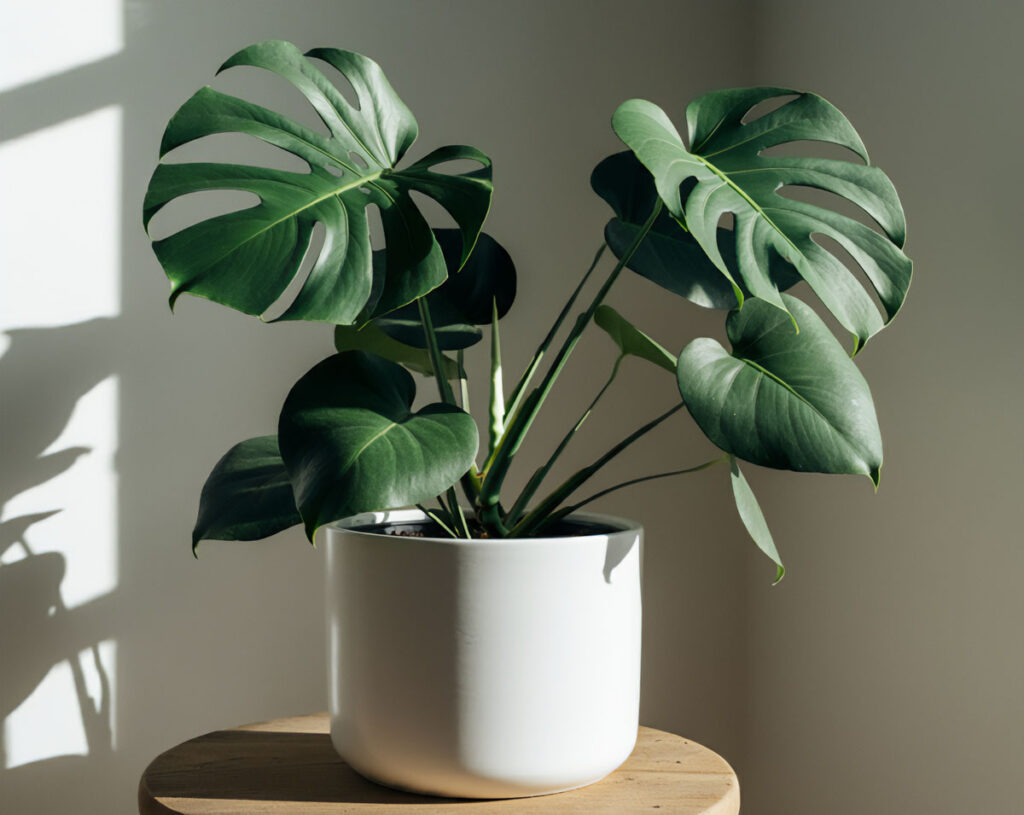
I tell all those who fall in love with this houseplant with large and split leaves to consider keeping it in a large space, and I remind them that it is a fast growing houseplant in ideal conditions.
Now the question is, what are the ideal conditions for the growth of this houseplant with large leaves?
It likes bright and indirect light. Remember to keep the balance because too much direct sunlight will burn its leaves, while too little light will stop its growth.
This tropical houseplant grows in an environment with high humidity. Use a humidifier or regular misting if your house is not humid enough.
Never leave the large-leaved houseplant in cold drafts or below 50°F or 10°C. I think a temperature between 65 and 85°F or 18 and 29°C is perfect.
Buy well-drained, nutrient-rich soil. I usually use a mixture of potting soil, peat, and perlite.
It is time to water when one inch of the soil surface is dry. If you water too much, the houseplant’s roots will rot; otherwise, you will face brown spots on the leaves if you water less.
It is poisonous to pets and humans and causes mouth irritation and digestive problems. So please keep it away from pets and humans.
Pests such as spider mites, scales, and mealybugs may attack it. Still, fortunately, they can be treated with insecticidal soap with regular checks and timely diagnosis.
I prune it occasionally to support its climbing nature.
2. Fiddle Leaf Fig (Ficus lyrata)
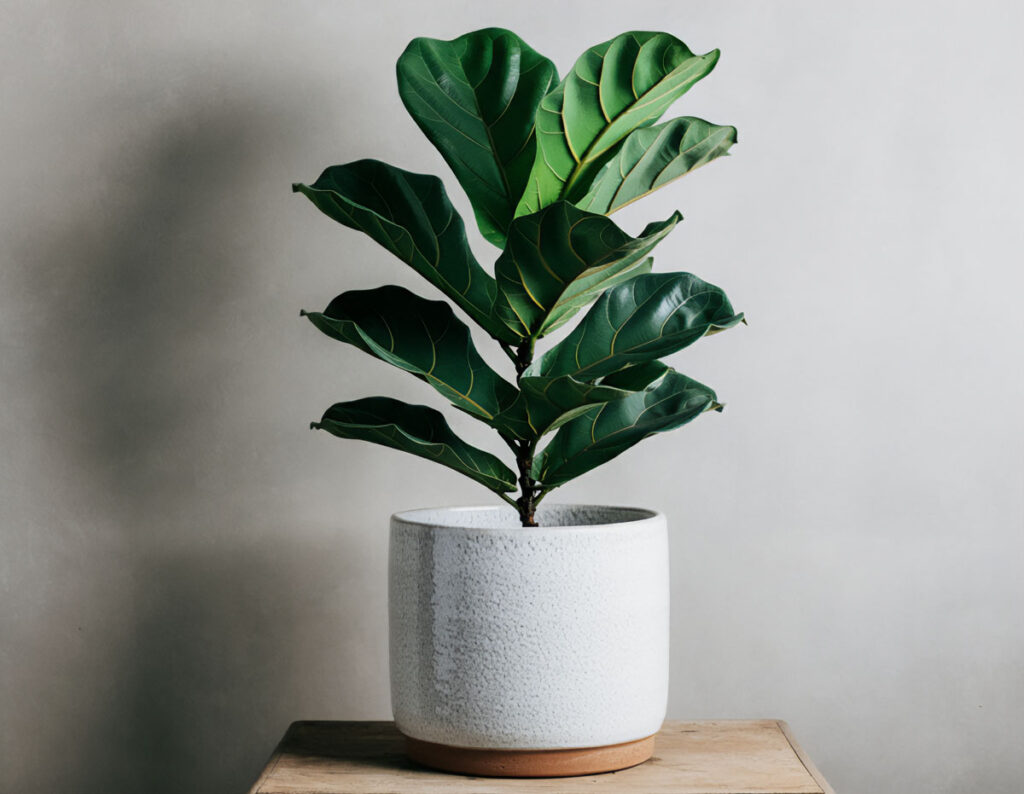
This houseplant has large, violin-shaped leaves and can grow up to 10 feet almost quickly indoors.
Regarding lighting for houseplants, I must say that bright and indirect light is enough. Of course, it is stubborn to direct sunlight, but the harsh afternoon rays bother it.
If you place this houseplant in dry air, its large leaves will fall, so moderate to high humidity is necessary.
In addition to providing a temperature between 60 and 75°F or 16 and 24°C, you must protect it from cold winds and Sudden rise and fall in air temperature.
Loamy soil has good drainage and watering houseplants; when the soil is dry, it helps it grow a lot. However, be careful that the leaves will wither and fall if you do not water the houseplant.
If maintaining the shape and size of the houseplant is essential to you, regularly prune it and dust its leaves. If it is attacked by pests such as spider mites, scale, and mealybugs, treat it as soon as possible.
Indeed, it is poisonous to pets and humans. Be careful not to let your cat chew it.
3. Elephant Ear (Alocasia and Colocasia species)
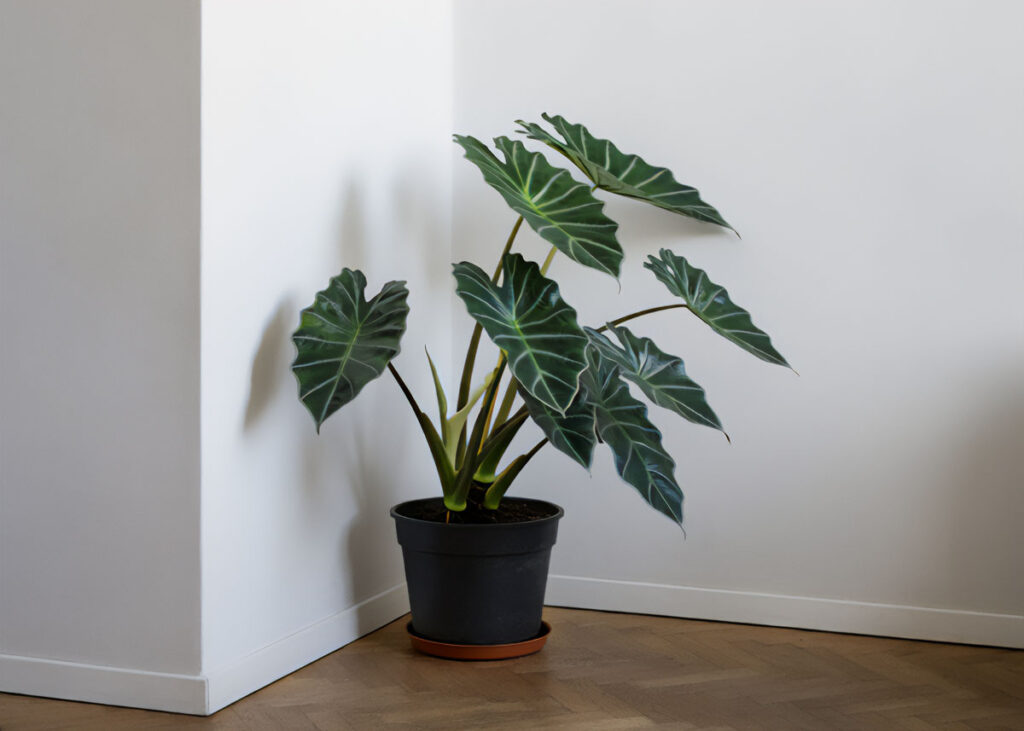
The Elephant Ear matures in a few months, and its large heart leaves can reach 3 feet, so it makes sense to see it in large spaces.
It prefers bright and indirect light, high humidity, and warm temperatures between 65 and 85°F or 18 and 29°C. By all means, it can survive in partial shade.
When it comes to the best soil for the houseplant, I must say that it works well with a combination of potting soil, peat, and compost. Always keep the well-draining soil moist but not waterlogged. In general, too much and too little watering harms the large-leaved houseplant.
They are attacked by pests such as spider mites, aphids, and mealybugs. I use insecticidal soap to treat them.
Pets and humans are poisoned if consumed.
It is not harmful to prune the dead and damaged leaves of the indoor plant.
4. Philodendron Selloum (Tree Philodendron)
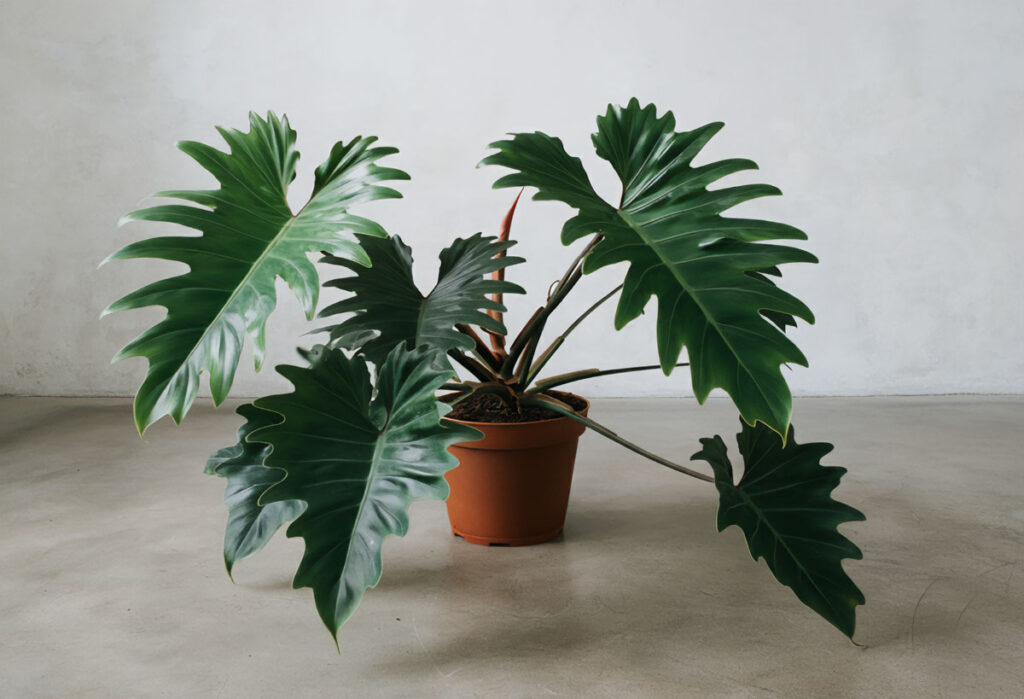
If you provide the Philodendron Selloum’s needs, its leaves will quickly grow to several feet and fill the space of your home.
So don’t forget bright and indirect light, high humidity, soil with proper drainage, regular watering, occasional pruning, and dusting of large leaves.
This houseplant with large leaves grows in temperatures from 65 to 80°F or 18 to 27°C and hates cold winds and temperatures below 55°F (13°C).
It is toxic to pets and humans and is sensitive to pests such as spider mites, scales, and aphids.
5. Calathea Orbifolia
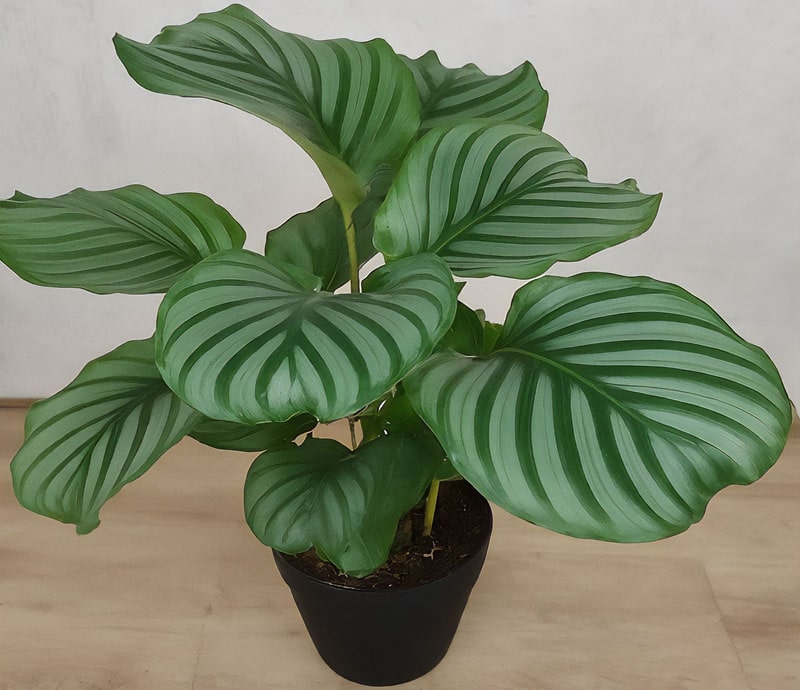
The large round leaves of the Calathea Orbifolia I had recently seen in the greenhouse were about a foot in diameter. This indoor plant has an average growth rate and can be kept in a space that is neither too big nor too small.
Place it somewhere with bright indirect light, high humidity, and a temperature between 65 and 80°F (18 and 27°C).
Because low light reduces the vibrant leaf patterns, it cannot survive below 60°F (15°C).
Use a well-drained, peat-based soil. I suggest a mixture of potting soil, peat, and perlite.
Water it regularly, and it is better to use distilled water or rainwater so that the color of the leaves does not change.
It is better to clean the leaves and prevent the attack of pests such as spider mites and aphids by regular inspection.
This houseplant with large leaves is not harmful to your children and pets.
6. Banana Plant (Musa species)
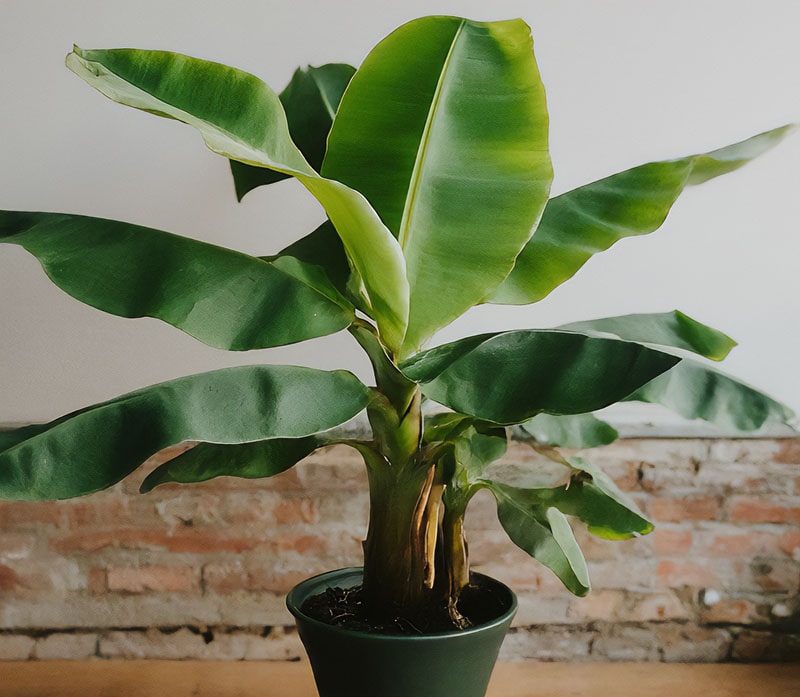
If you have ever cared for a banana plant, you know its height reaches 6 to 10 feet in a few months at home.
Light plays a unique role in the growth of this houseplant. Could you put it in bright and indirect light? Provide tropical conditions with regular misting or humidification. Keep the temperature constant between 75 and 95°F(24 and 35°C). Water the well-draining soil well. Avoid overwatering and underwatering.
This houseplant with big leaves is not harmful to pets and humans, and you can safely maintain it in your living room.
When you prune the dead leaves of the banana plant, be aware that pests such as spider mites, aphids, and mealybugs are always lurking.
7. Taro (Colocasia esculenta)
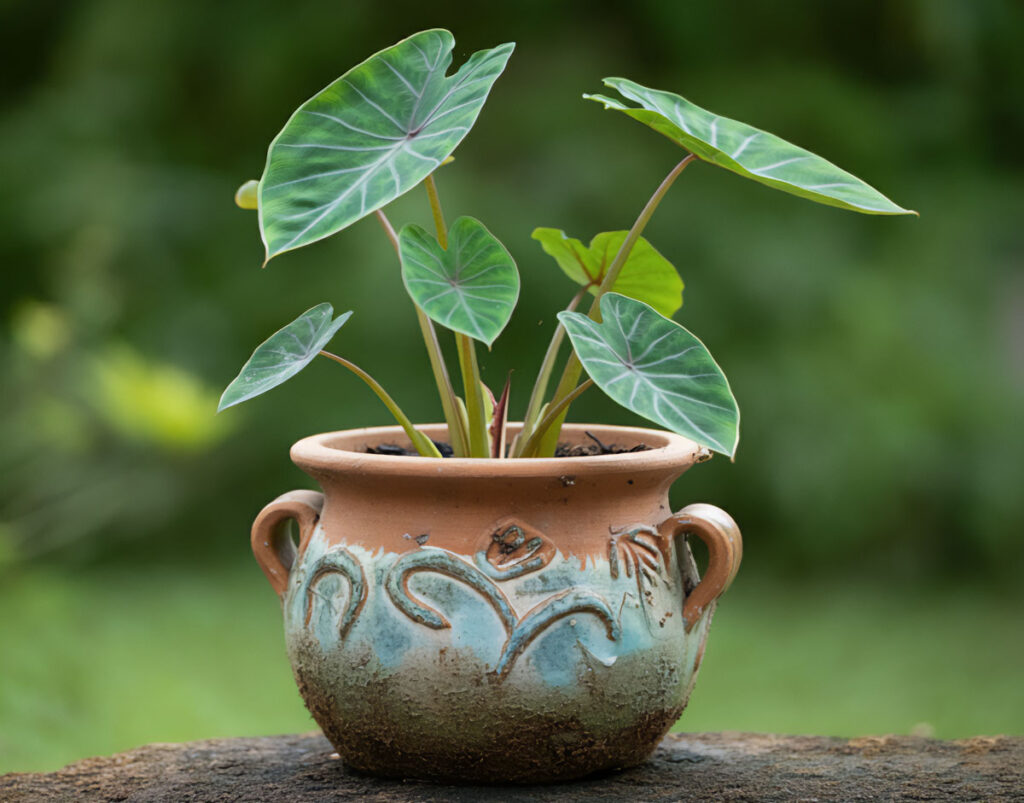
If you place the Taro in bright and indirect light, provide sufficient moisture and ideal temperature (between 65-85°F), use well-drained soil and water regularly, take pruning seriously, and in case of pest infestation, Treat it thoroughly, I promise that in a few months, the houseplant will mature and its large, heart-shaped leaves will grow to three feet.
It is toxic and dangerous for pets and humans.
8. Canna Lily (Canna indica)
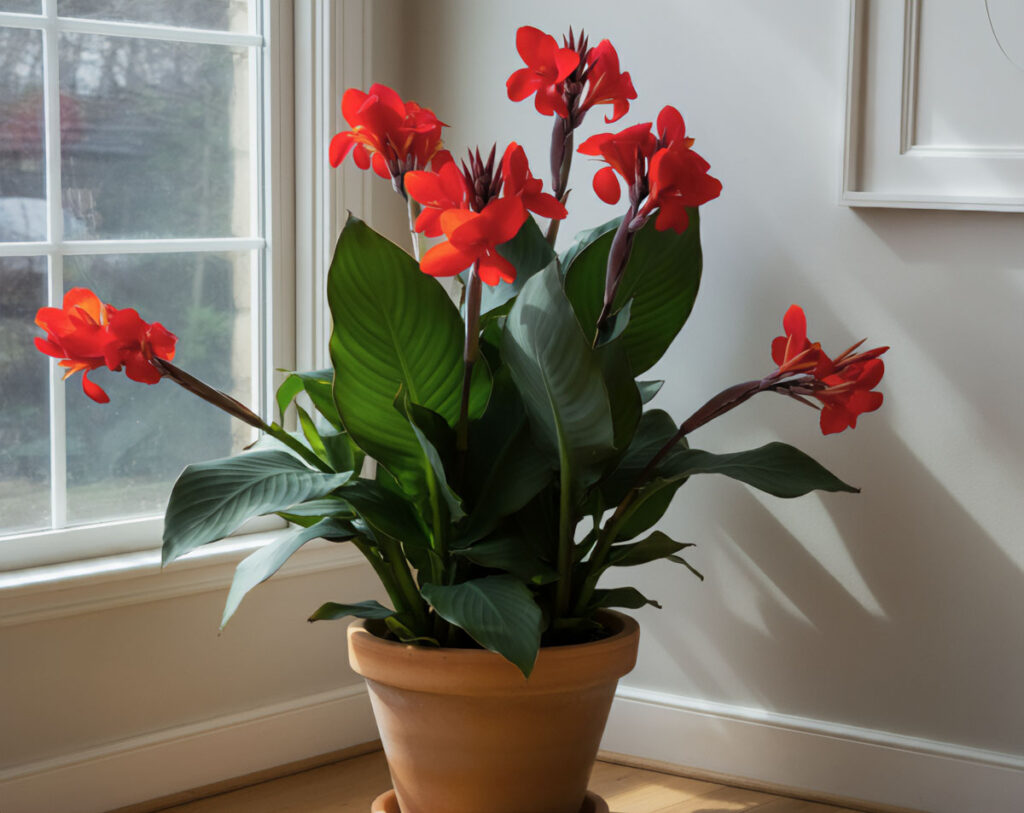
Under ideal conditions, this famous houseplant quickly fills the house’s space with its large leaves and reaches a height of 6 feet.
When it comes to light, it prefers full sun to partial shade. It grows well only if it receives at least 4 to 6 hours of sunlight daily.
Keep the environment moist by regular misting.
This houseplant with large leaves is defenseless against cold; keep it in a warm environment between 60-70°F (16-21°C).
A combination of potting soil, compost, and sand is the best option as fertile soil with proper drainage. However, it is better to use houseplant fertilizer once in a while.
Keeping the soil moist greatly helps the houseplant’s growth and needs more watering during the growing season.
It is houseplant pet-friendly and is a safe choice for homes with animals or children.
In case of lack of attention, the possibility of getting pests such as aphids, spider mites, and worms is high.
9. Homalomena
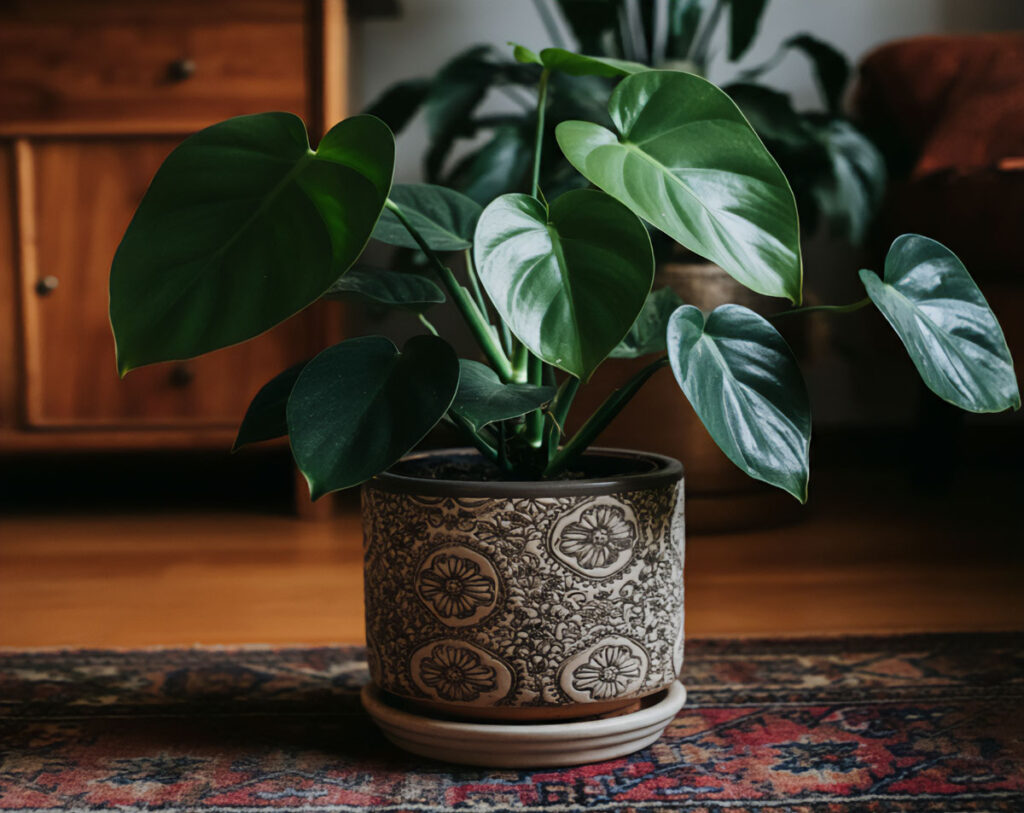
Although Homalomena has big heart leaves, it can be grown in a medium space.
Bright and indirect light, high humidity, well-drained soil, temperature between 60 to 80°F (16 to 27°C), standard watering, and prevention of pest attacks will make the large-leaved houseplant grow steadily.
Be careful that your dog, cat, or curious child does not eat this indoor plant because it is poisonous and dangerous.
10. Japanese Aralia (Fatsia japonica)
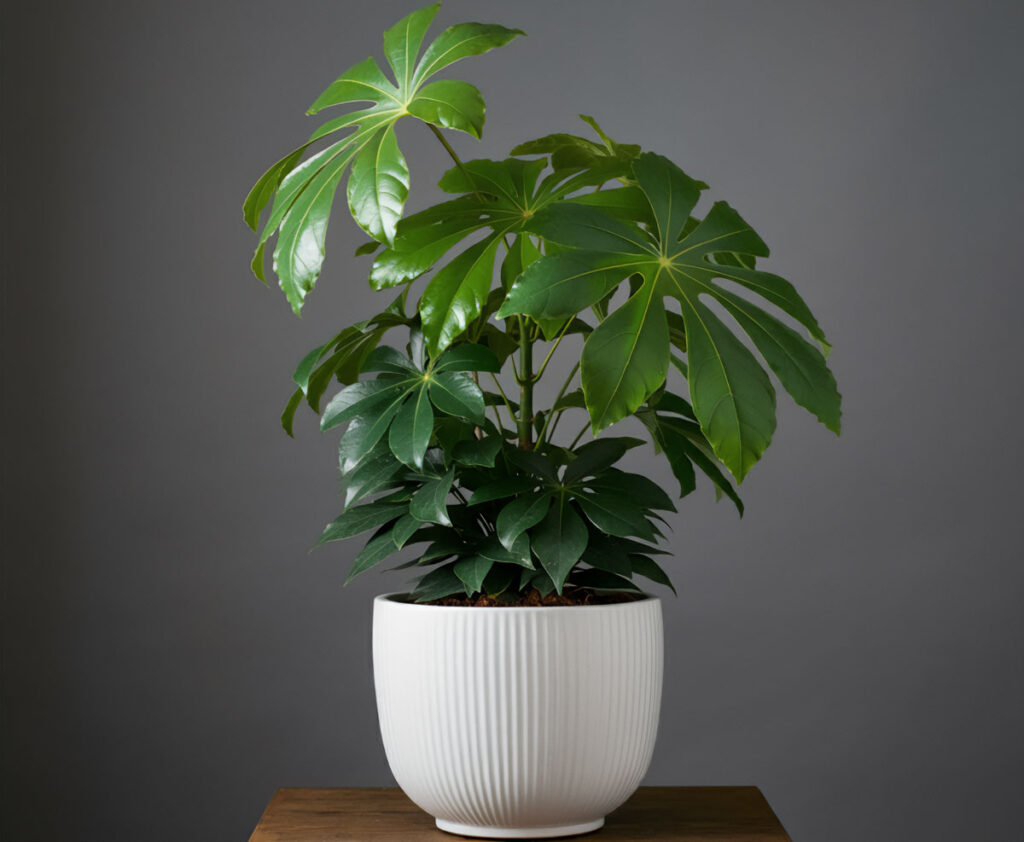
This houseplant is known for its large, palmate leaves and grows up to 6 feet tall. It can be said that it does not grow fast, and you can keep it in an average space.
It loves bright and indirect light. However, Japanese Aralia is quite tolerant of low light.
It grows in temperatures between 60 and 75°F or 16 and 24°C and moderate to high humidity. I do not mean that the cold is unbearable for it. This houseplant can tolerate cooler temperatures down to 45°F (7°C).
The ideal houseplant with large leaves soil is well-drained. It is better to hydrate regularly, clean houseplant leaves, and treat them in case of disease and houseplant pest symptoms.
Don’t worry about your pet or child anymore. This houseplant is non-toxic to pets and humans.
If you have any questions about choosing or taking care of big leaf houseplants, don’t hesitate to ask me in the comments.
